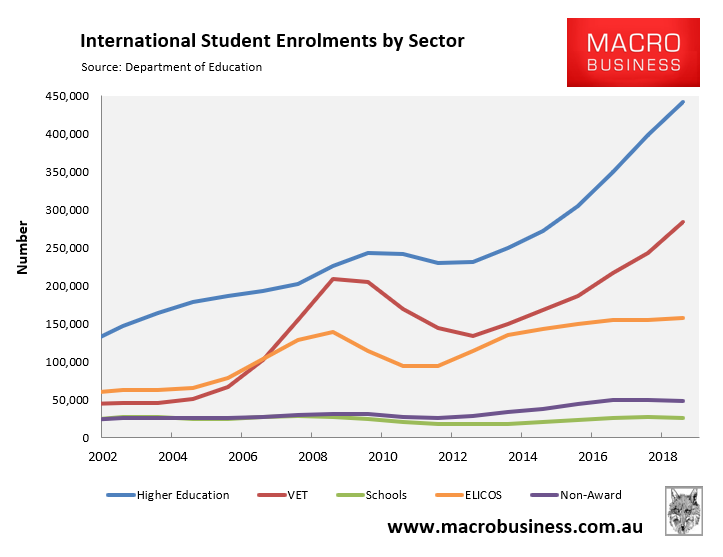The vice-chancellor of the Australian National University (ANU), Brian Schmidt, has called on the federal government to relax requirements to qualify for Graduate (485) visas in order to boost international student enrolments:
Coming out of COVID-19, there is one thing that needs urgent attention from the Department of Home Affairs, says Professor Schmidt: the 485 visa.
This gives students the right work in Australia after they have graduated and is an essential part of making Australian universities a magnet for international students.
But inflexibility in the rules means as students returned home to study online their visa eligibility was compromised.
DHA is handling visa anomalies on a case-by-case basis, slowing approvals to a crawl, unnerving students and undermining the attraction of studying in Australia.
By contrast on May 4, the UK announced an extended post-study work visa for international students and on May 14, Canada relaxed criteria for all international students wanting post-study work rights visas.
That makes the two countries most likely to draw students away from Australia significantly more attractive.
Professor Schmidt says the one thing that will make a difference to university enrolments is if Australia quickly and generously resolves the status of work-right visas.
Graduate (485) visas are considered one of the most attractive of their kind in the world because they provide full work rights to international students and allow them to remain in Australia for 2 to 4 years following their studies.
They are also treasured by international students because they are widely perceived as a pathway to permanent residency.
Following a strategic review of the student visa program in 2011 (‘the Knight review’), the Gillard Government liberalised graduate (485) visas in 2013. Specifically, 485 visa holders were excluded from needing to meet the Australian standard for an occupation on the Skilled Occupation List. They were also permitted to remain in Australia for between two and four years post study, rather than the previous 18 months.
The Knight review was strongly in favour of expanding post study work rights because of the significant benefits to Australian universities and Australian employers. That is, following these changes, international students would be more likely to choose to study in Australia because of more favourable visa arrangements.
Peter Mares explains:
Knight stated plainly that an expanded work visa was essential to “the ongoing viability of our universities in an increasingly competitive global market for students.” Vice-chancellors also made the connection explicit. At the time, Glenn Withers, chief executive of Universities Australia, said that Knight’s “breakthrough” proposal was as good as or better than the work rights on offer in Canada and the United States.
As usual, the deleterious impact on Australia’s labour market from the expansion of graduate (485) visas was glossed over by the Knight Review, and is being ignored by Brian Schmidt.
While the Review did acknowledge that international graduates could find work in low-level jobs unrelated to their studies, it claimed that wages and other benefits would compare favourably against their home countries. Moreover, the Review ignored the deleterious impacts on local graduates, who would suffer from increased competition for jobs and lower wages.
Again, unlike temporary skilled shortage (TSS) visas, holders of graduate (485) visas are not required to be qualified for any of the jobs on the Skilled Occupation List. They do not need a firm offer of work from an employer. They are not required to be paid a minimum salary. Nor must they find a job related to their qualifications or require a certain level of skill.
Basically, 485 visa holders may work or study in any job, for any employer. And their visa remains valid even if they cannot find a job.
The explosion in graduate (485) visas, therefore, represents a positive labour supply shock that has lowered the bargaining power of younger Australians and local graduates, in turn placing downward pressure on wages.
But that is not the end of the story. As we already know, there were 883,000 international students enrolled in Australia’s tertiary institutions as at December 2019:

These students are permitted to work 20 hours per week, and some work more hours illegally.
This places downward pressure on Australian wages, especially for those aged 20-34, as noted by the Grattan Institute last year.
The biggest beneficiaries from this system are Australia’s rent-seeking universities, which profit from the increased tuition fees, alongside employers, which benefit from lower wage costs.
The biggest losers are younger Australians, who face greater competition for entry-level and graduate jobs, lower wages, as well as greater competition for housing.
Rather than “generously” loosing access to the 485 visa, it should be tightened. Otherwise, wage growth will never recover, especially given the current high unemployment.

